7. The Emperor’s Naked Army Marches On (Kazuo Hara, 1987)
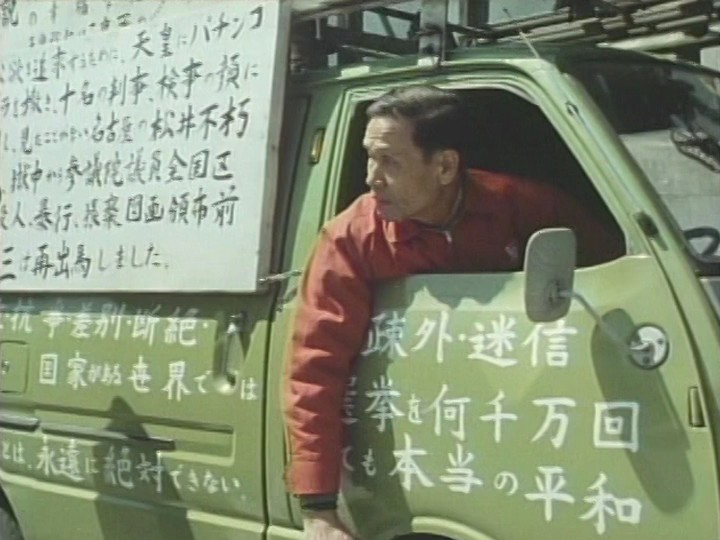
This documentary follows Kenzo Okuzaki, a self-proclaimed anarchist, in his quest to find the reason behind the execution of two fellow soldiers at the end of World War II, while Japan had already surrendered.
The absurdity of the film lies with its protagonist, a truly obnoxious individual, who is willing to resort to extreme measures in order to achieve his goal. In that fashion, he physically attacks those who do not answer his questions, even if a number of them are incapacitated older people.
Furthermore, he threatens everybody, he constantly proclaims the fact that he was arrested for circulating pornographic material regarding the emperor, and even resorts to forcing members of his family to pose as relatives of the actual victims, in order to be more persuasive in his interviews.
The documentary won a number of awards from festivals all over the world, both for the director and the film as a whole.
8. R100 (Hitoshi Matsumoto, 2013)
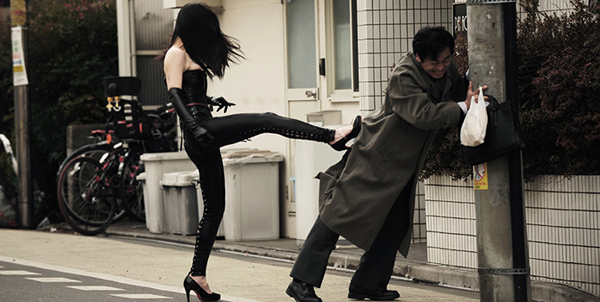
Takafumi Katayama is a regular salary man who finds an escape from his excessively “regular” life by signing a one-year contract with an eccentric S&M club that entails his beating by a number of dominatrixes in unexpected moments. The sole condition of the contract is that he cannot terminate it before a year has passed. However, eventually things take a turn for the worse and Katayama ends up fearing for the safety of his family.
The irrationality in this film begins with its title that states it is allowed for people over 100 to watch it, and expectantly continues in the actual movie. Black comedy, adventure, action, thriller are all implemented here and at one point, “R100” becomes completely surreal.
In that fashion, one of the “highlights” of the film is presented when the story takes a break in order for the scriptwriters to discuss their work, while the 100-year-old director insists that only when someone reaches the age of 100 will they truly understand it.
9. Funky Forest (Katsuhito Ishii, Hajime Ishimine, Shunichiro Miki, 2005)
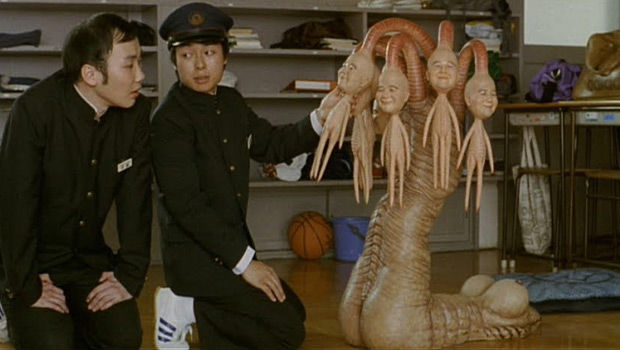
“Funky Forest” is actually an indescribable film chiefly because it ignores every rule of conventional narrating, but also due to a number of impossible characters and themes. However, over the years it amassed a huge cult following.
The movie starts with “The Mole Brothers”, a comedic duo that mainly slap each other and act as the narrators of the film. The rest of the absurd characters include three brothers who are unpopular with women, one of whom is a plump American boy; a girl who fights monsters in other dimensions; a teacher who has a relationship with a student; and a man who sprays various liquids from his nipples.
More of a collage of Japanese cultural references than an actual film, “Funky Forest” nevertheless includes a wonderful cast with actors like Tadanobu Asano, Hideaki Anno, Susumu Terajima, Ryo Kase and Rinko Kikuchi.
10. House (Nobuhiko Obayashi, 1977)

The script of this particular film was considered so absurd at the time that no director would take it on, in fear of ruining his or her career. Nobuhiko Obayashi, however, wanted to direct it since he initially read it, a plan he accomplished two years later.
A young girl, Gorgeous, and her six friends visit her aunt’s house, where a number of ridiculous supernatural phenomena occur.
Obayashi experimented comprehensively with the editing, producing a number of wonderful shots although his sense of proportion seems long lost.
“House” constantly transforms from supernatural thriller to slapstick comedy and vice versa, in a pop art frame where the special effects “flirt” with drollness, due to their absurdity.
11. Symbol (Hitoshi Matsumoto, 2009)
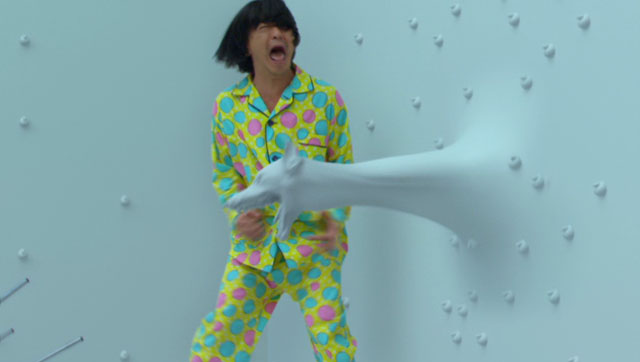
Hitoshi Matsumoto proved once more with this film that his logic applies solely to him and can be quite incoherent when somebody else tries to figure him out.
The movie revolves around two axes. In the first one, a Japanese man wakes up in his pajamas in a white room without doors. Eventually he discovers a switch and when he pushes it, a number of random objects appear from every direction that may help him escape, including a pink toothbrush and a rope.
The second ones takes place in a dusty village in Mexico, where a masked wrestler is about to fight a crucial match. His family is also present, although they are anxious due to his unwillingness to compete.
Although the second axis seems realistic enough, this is nevertheless another absurd film by the master of the kind, a fact that becomes evident by the hilarious way the two stories eventually combine. Even more hilarious and impressive is the striking finale, where the film’s technical prowess also becomes clear.
12. Thermae Romae (Hideki Takeuchi, 2012)
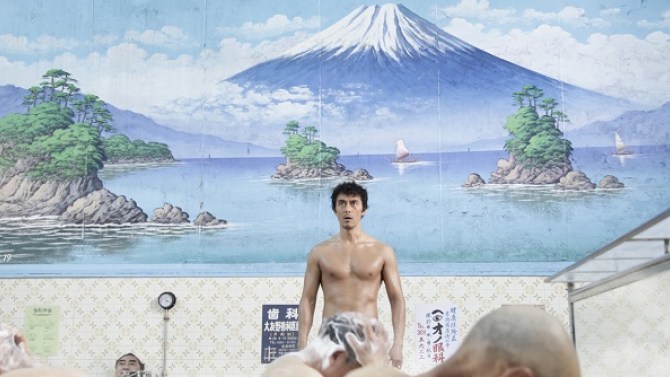
Lucius is a Roman architect who is having troubles coming up with plans for a new bathhouse. However, eventually he finds a hidden tunnel in another bathhouse that leads to modern Japan. The contemporary bath accommodations he finds there, along with Mami, a young manga artist that functions as his tour guide, inspire him to complete his building in ancient Rome.
Even if the theme of an ancient Roman roaming in modern day Japan was not enough, the fact that all the Romans are played by Japanese actors definitely results in an utterly absurd film.
Neverhteless, “Thermae Romae”, which was already a successful manga and anime before it was adapted into a live-action movie, managed to become an international sensation screening in Canada, USA, Hong Kong and Italy. Furthermore, it was the second highest-grossing film in Japan in 2012 and the protagonist, Hiroshi Abe, landed a Japanese Academy Award for Best Actor.
13. Picnic (Shunji Iwai, 1996)

Obviously, there had to be a film regarding a mental asylum in a list with “crazy” titles.
Coco, Tsumuji and Satoru are three mental patients who want to see the world outside of the establishment. However, they are not allowed to cross the asylum’s walls. Thus, they come up with an idea to fulfill their wish without breaking the wall: they step on top of it and start walking there, although this particular wall seems to go on forever.
Eventually, they meet a priest who gives them a bible and as they misinterpret it, they start to believe that the end of the world is quite near. Thus, they decide to have a picnic and wait for it.
Shunji Iwai managed to shoot a beautiful film with sad and depressing themes, and he accomplished that through pleasing cinematography, surreal incidents and outrageous dialogue.
Furthermore, the actors do a wonderful job of portraying their characters, particularly Chara as Coco and Tadanobu Asano as Tsumuji, who netted the Best New Talent and Best Actor awards, respectively, from the Yokohama Film Festival.